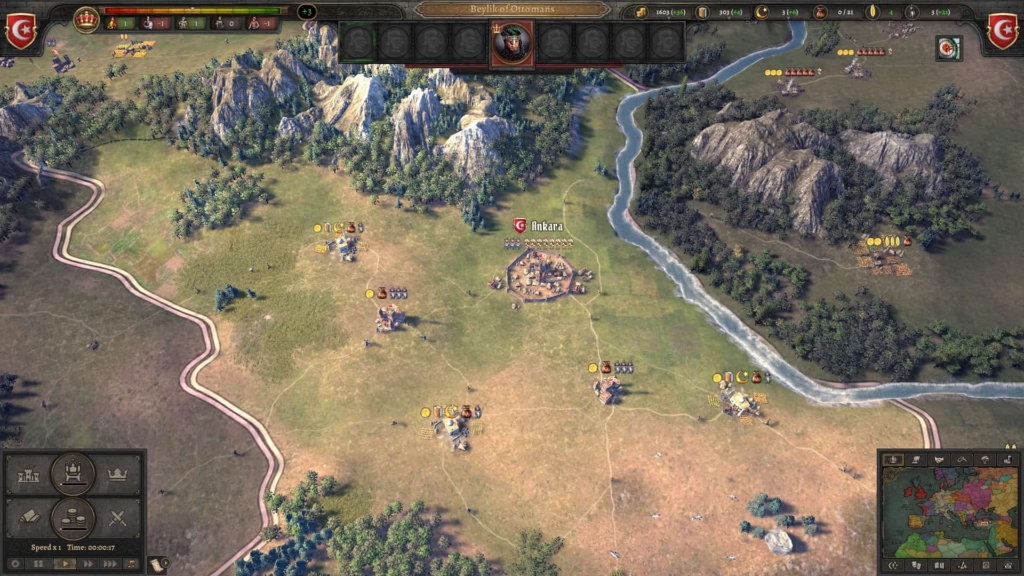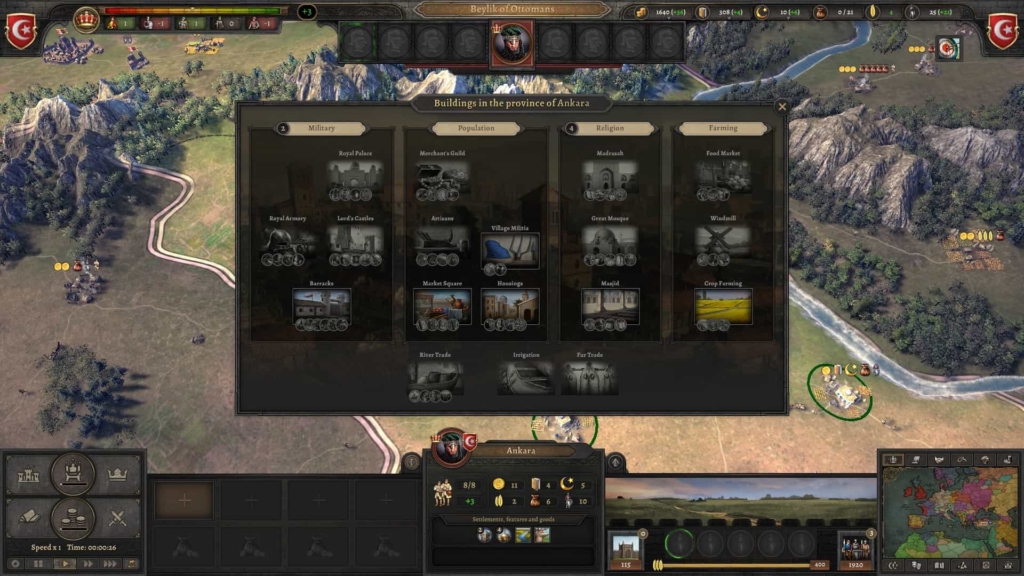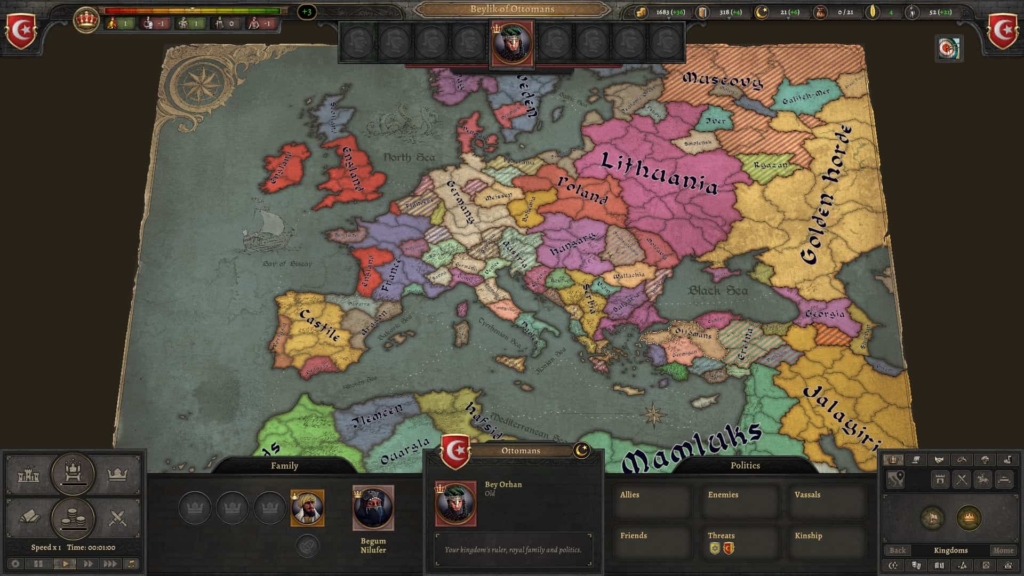Knights of Honor II: Sovereign is as complex as it is interesting, with numerous systems that merge to create a wonderfully fun (and difficult) experience.
The first title in this series was released in 2004 to grand acclaim from strategy fans. The game was lauded for its complex systems and the way in which players can manage their own empire. Of course, the years passed, which allowed other juggernauts like Paradox Interactive to conquer the medieval strategy world with their own series, Crusader Kings. Despite this, fans have been salivating for the return of the Knights of Honor.
This then brings us to Knights of Honor II: Sovereign, a sequel almost 20 years in the making from developer Black Sea Games. Like its predecessor, Knights of Honor II has maintained its level of complexity without sacrificing much. Players have the choice of many countries across Europe, Africa, and Asia, and they can have small inserts describing the nation and its values.
It should be stated quite quickly that the game can be relentless and, with a rather poor tutorial, can be quite complicated to master. Like bashing your head against a brick wall, it is almost as if the game does not wish for you to enjoy it early on. If you are not a huge fan of RTS titles, then dedicating yourself to learning the systems of the game is essential, as every aspect of the game is at least somewhat complicated. For experienced RTS players, I would anticipate far less of a learning curve.
The gameplay of Knights of Honor II: Sovereign is not too dissimilar to other modern strategy games, like the primary counterpart in Crusader Kings III. Players have access to 9 seats on their very own royal council, where they can assign various dignitaries of different pedigrees. Marshals, Merchants, Clerics, Spies, and Diplomats each have their unique talents that can benefit you in different ways.

Merchants provide players with more gold, especially early on. Meanwhile, spies can provide you with information about your enemies and allies nearby. Wanting to improve your relations with a neighboring kingdom? Send a diplomat. If you want to boost your religion, then a cleric is required, and if you are next to a rival, then a marshal is almost necessary to destroy your enemies.
The title has dozens of interconnected and interesting systems. In addition to utilizing dignitaries, it also contains various systems related to building construction. Players can construct different types of buildings in their provinces, and depending on the types of buildings, they will produce different resources or, in some cases, boost the resources. An example is that if a building is upgraded in one province, all the other buildings across provinces are constructed automatically.
Despite the number of interconnecting systems in the game, I do feel that there is a lack of government types that could enhance the experience of particular nations. Venice, in particular, feels too similar to the rest of the world, and those familiar with Medieval history would know that was not the case.

Moreover, like many RTSs, it would not have been complete without the option of a full-scale war. War in Knights of Honor II primarily works in the way of units, with each unit within a province providing a military score and improving with experience earned through the number of battles that the units survive. Units can be assigned to a Marshall who, in turn, also earns experience and can allow for five additional slots where players can slot siege engines, supply wagons, and additional troops.
Lastly, in regards to war and, more specifically, individual battles, players can dive in and lead battles themselves, controlling individual units in a similar vein to Total War. This can be a fun and intense experience; however, I often found that it instead bloated the title, particularly due to how many battles can be fought; as such, intervening in a battle is something that should be done rarely. This is but a fraction of the incredibly intricate in-game systems that Knights of Honor II: Sovereign has to offer, and it creates an incredibly difficult and rewarding experience.
Another excellent aspect of Knights of Honor II: Sovereign is the UI. The UI in the game is clean, simple, and elegant. The clean colors make the world easily readable for everyone playing, and the map modes allow players to see whatever they ‘need’ to see at any given moment. Moreover, the resources bar is also very simple but effective. The text is easy to see and ensures that there is no confusion.

In addition to this, the building menus or the power rankings are very well done and manage to be both immersive and useful simultaneously. They are some of the best UI designs in RTS games currently and make Knights of Honor II a joy to play.
Furthermore, Knights of Honor II also has a fantastic soundtrack that enhances the full experience of the game, immersing you in the medieval world as you engage with other nations through the various means that are available to you. Moreover, the sound design of the game, in general, is fantastic. Punchy key presses and the ambient audio of wind and other Foley make the game far more immersive than players may first consider.
However, it should be noted that the game’s narrator and the other dialogue heard throughout the game can sometimes be rather tedious and lead to more irritation than enjoyment, depending on the player’s personal preference.
Overall, Knights of Honor II: Sovereign is a complex and intriguing title. Every inch of the game is covered in exquisite detail and is a great deal of fun. Despite its intense difficulty and learning curve, the title has managed to be one of the best strategy games released this year.
Here at GamesCreed, we cover everything related to gaming. From the latest news to game reviews, GamesCreed has you covered.
















